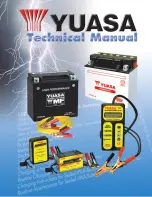
can overheat them, possibly causing a
blowout. Overloading the tires can also result
in handling or steering problems, or brake
failure.
Check the tire inflation pressure at least once
a month.
Check and adjust the tire inflation pressure
when the tires are cold (
Y
page 193).
Checking tire inflation pressure
manually
Follow the steps below to achieve correct tire
inflation pressure:
X
Remove the cap from the valve on one tire.
X
Firmly press a tire gauge onto the valve.
X
Read the tire inflation pressure on the tire
gauge and check against the
recommended tire inflation pressure on the
Tire and Loading Information placard on the
driver’s door B-pillar (
Y
page 201). If
necessary, add air to achieve the
recommended tire inflation pressure.
X
If you have overfilled the tire, release tire
inflation pressure by pushing the metal
stem of the valve with e.g. a tip of a pen.
Then recheck the tire inflation pressure
with the tire gauge.
X
Install the valve cap.
X
Repeat this procedure for each tire.
Tire pressure loss warning system
(Canada only)
While the vehicle is being driven, the tire
pressure loss warning system monitors the
set tire inflation pressures by evaluating each
wheel’s rotational speed. This allows the
system to detect a significant loss of pressure
in a tire. If a wheel’s rotational speed changes
due to falling tire inflation pressure, you will
see a corresponding warning message in the
multifunction display.
The tire pressure loss warning system may
function in a restricted manner or with a delay
R
when snow chains are mounted to the
vehicle
R
in the presence of ice and snow
R
when you are driving on a loose surface
(e.g. sand or gravel)
R
when you are driving in a very sporty
manner (involving rapid acceleration or
high speeds in curves)
G
Warning!
When the multifunction display shows the
message
Check Tire Pressure Soon
, one
or more of your tires are significantly
underinflated. You should stop and check
your tires as soon as possible, and inflate
them to the proper tire inflation pressure as
indicated on the vehicle’s Tire and Loading
Information placard or, if available, on the tire
inflation pressure label.
Driving on a significantly underinflated tire
causes the tire to overheat and can lead to
tire failure. Underinflation also reduces fuel
efficiency and tire tread life, and may affect
the vehicle’s handling and stopping ability.
Each tire, including the spare, should be
checked at least once a month when cold.
Inflate the tires to the recommended tire
inflation pressure as specified on
R
the Tire and Loading Information placard on
the driver’s door B-pillar
or
R
the tire inflation pressure label located on
the inside of the fuel filler flap
i
The recommended tire inflation pressures
for your vehicle can be found on
R
the Tire and Loading Information placard
located on the driver’s door B-pillar
(
Y
page 201)
R
the tire inflation pressure label on the
inside of the fuel filler flap
196
Tires and wheels
Operation
207_AKB; 2; 35, en-US
d2ureepe,
Version: 2.11.8.1
2009-07-17T07:10:21+02:00 - Seite 196
Содержание 2010 E-Class Coupe
Страница 1: ...E Class Coup Operator s Manual...
Страница 4: ......
Страница 26: ...24...
Страница 70: ...68...
Страница 294: ...292...
Страница 309: ...307...
Страница 310: ...308...
Страница 312: ...Order no 6515 3716 13 Part no 207 584 27 81 Edition B 2010 2075842781 2075842781...















































